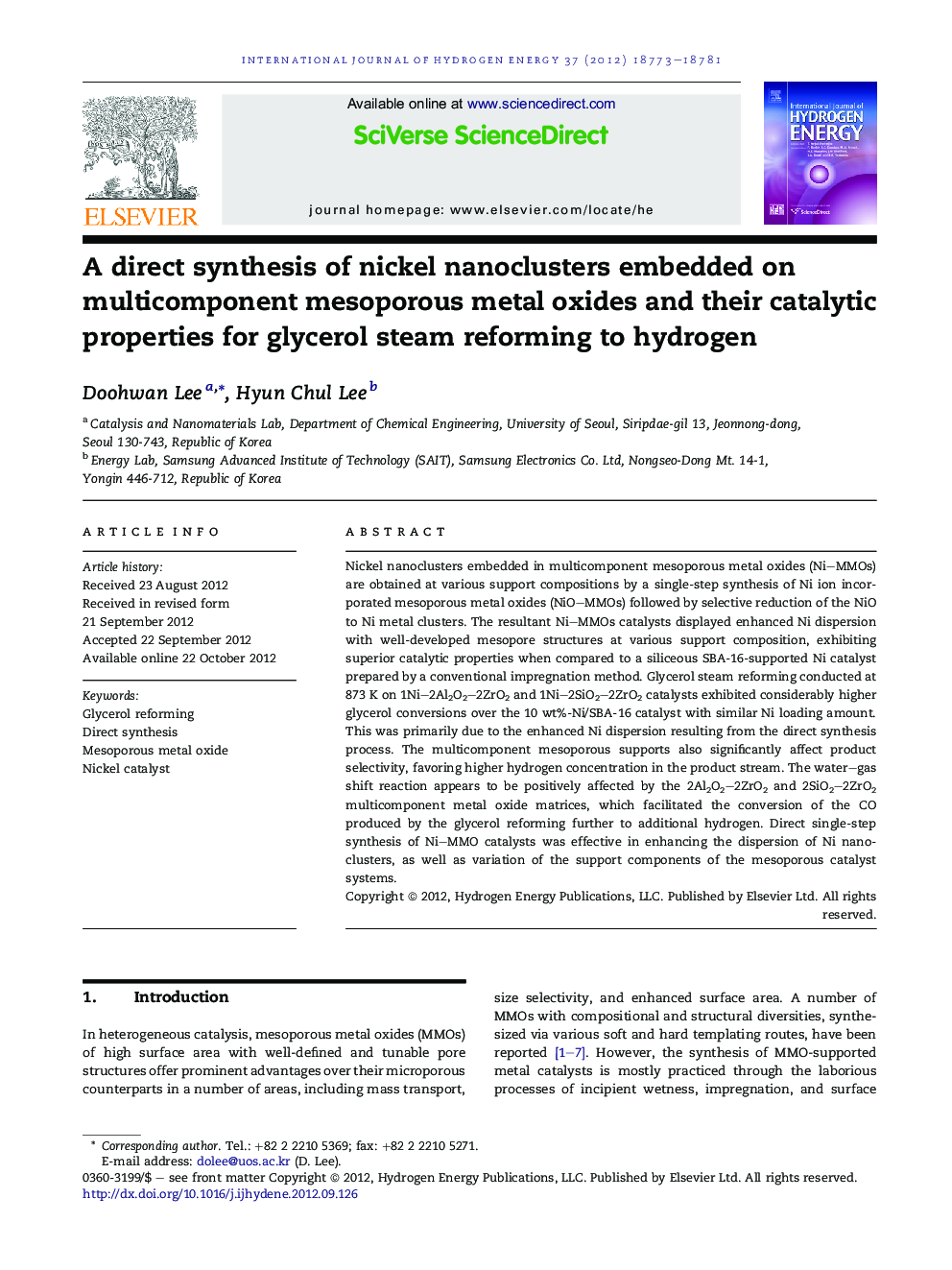| Article ID | Journal | Published Year | Pages | File Type |
|---|---|---|---|---|
| 1276082 | International Journal of Hydrogen Energy | 2012 | 9 Pages |
Nickel nanoclusters embedded in multicomponent mesoporous metal oxides (Ni–MMOs) are obtained at various support compositions by a single-step synthesis of Ni ion incorporated mesoporous metal oxides (NiO–MMOs) followed by selective reduction of the NiO to Ni metal clusters. The resultant Ni–MMOs catalysts displayed enhanced Ni dispersion with well-developed mesopore structures at various support composition, exhibiting superior catalytic properties when compared to a siliceous SBA-16-supported Ni catalyst prepared by a conventional impregnation method. Glycerol steam reforming conducted at 873 K on 1Ni–2Al2O2–2ZrO2 and 1Ni–2SiO2–2ZrO2 catalysts exhibited considerably higher glycerol conversions over the 10 wt%-Ni/SBA-16 catalyst with similar Ni loading amount. This was primarily due to the enhanced Ni dispersion resulting from the direct synthesis process. The multicomponent mesoporous supports also significantly affect product selectivity, favoring higher hydrogen concentration in the product stream. The water–gas shift reaction appears to be positively affected by the 2Al2O2–2ZrO2 and 2SiO2–2ZrO2 multicomponent metal oxide matrices, which facilitated the conversion of the CO produced by the glycerol reforming further to additional hydrogen. Direct single-step synthesis of Ni–MMO catalysts was effective in enhancing the dispersion of Ni nanoclusters, as well as variation of the support components of the mesoporous catalyst systems.
► Synthesized Ni ion incorporated multicomponent mesoporous metal oxides. ► Reduction treatment developed dispersed Ni nanoclusters on the mesoporous supports. ► The catalysts were applied for glycerol steam reforming to hydrogen. ► The catalysts exhibited significantly enhanced H2 production yield and selectivity.
